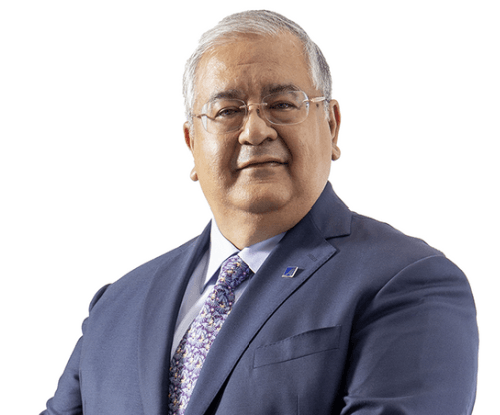ASEAN Moves to Strengthen Adaptation Finance with New White Paper

• New white paper sets the foundation for a forthcoming Adaptation for Resilience (mARs) Guide supporting Environmental Objective 2 of the ASEAN Taxonomy.
• Adaptation finance in developing countries faces a USD 310–365 billion annual requirement by 2035, while current international public flows remain around USD 26 billion.
• EU-backed technical support aims to drive interoperable, science-based adaptation finance frameworks across ASEAN capital markets.
A regional step toward climate resilience
Southeast Asia faces climate pressures that are reshaping economic decision-making, from rising seas to intensifying heat and drought. Against this backdrop, a new white paper from the ASEAN Capital Markets Forum (ACMF), Sustainable Finance Institute Asia (SFIA), and UNEP Finance Initiative (UNEP FI) lays critical groundwork for a regional guide meant to channel more finance toward resilience. The effort is supported by the EU Sustainable Finance Advisory Hub (EUSFAH), whose mandate is to strengthen credible, interoperable sustainable finance frameworks globally.
The white paper is the first phase in developing the mitigation co-benefit and Adaptation for Resilience (mARs) Guide, designed as a companion to the ASEAN Taxonomy for Sustainable Finance. Its purpose is to help financial institutions, regulators, and issuers identify and evaluate adaptation-aligned activities with the level of clarity already available for climate mitigation.
“The ACMF is committed to advancing sustainable finance in the region. The mARs Guide will complement the ASEAN Taxonomy by providing practical tools for adaptation finance, ensuring that our markets remain resilient and future-ready,” said Dato’ Mohammad Faiz Azmi, Chairman of the Securities Commission Malaysia and current ACMF Chair. “This white paper outlines the key elements and considerations that will guide the development of the mARs Guide, and highlights the need to address the adaptation funding gap, through mechanisms such as blended finance, which is key to funding non-bankable but necessary projects.”

Closing the adaptation finance gap
The white paper arrives at a moment when adaptation finance remains one of the weakest links in global climate spending. UNEP’s latest Adaptation Gap Report estimates that developing countries will need USD 310–365 billion annually by 2035 to protect people, infrastructure, and ecosystems, yet only USD 26 billion in public international adaptation finance was available in 2023. ASEAN economies—home to nearly 700 million people—are already experiencing the economic consequences of delayed investment.
Taxonomies are increasingly central to mobilizing capital because they create a shared definition of “credible” sustainable activities. ASEAN Member States have been aligning domestic taxonomies with the regional ASEAN Taxonomy in areas ranging from climate mitigation to biodiversity and circular economy priorities. But stakeholders across the region have been calling for deeper, sector-level guidance on adaptation to help financial institutions integrate resilience criteria into investment decisions, product design, and reporting.
The mARs Guide is intended to fill that gap. By mapping national adaptation priorities across ASEAN Member States, the white paper identifies points of convergence that could form a regional baseline. It also outlines proposed principles for the mARs Guide: science-based, locally relevant, inclusive across the region, attentive to maladaptation risk, compatible with international frameworks, and usable for both financial institutions and real-economy actors.
RELATED ARTICLE: ASEAN SMEs: In the Driving Seat for Transformational Change towards Sustainable Development
“These findings help establish a methodological foundation,” the authors note, adding that expanded detail on adaptation-relevant technologies and climate-risk assessments will strengthen the implementation of the ASEAN Taxonomy’s Environmental Objective 2.
“This white paper is a critical step in building the foundations for adaptation finance in ASEAN. By aligning financial flows with resilience outcomes, the mARs Guide will help ensure that capital markets play their part in safeguarding communities and ecosystems against climate risks,” said Eric Usher, Head of UNEP FI.

The role of markets, regulators, and technical partners
The development process has brought together regulators, industry experts, banks, insurers, and investors across ASEAN. Feedback from financial institutions is helping shape a guide that is both technically sound and practical to apply—an essential requirement in markets where adaptation needs are highly diverse, from coastal protection to water security and agricultural resilience.
“Our mitigation efforts need to be supported by adaptation action as climate change impacts intensify,” said Eugene Wong, CEO of SFIA. “Guided by the key principles set out in the white paper, the mARs Guide will be developed to help providers and users of finance identify the technologies and approaches that capital should support to achieve the paradigm shift needed for resilience.”

The initiative is supported by UNEP FI in partnership with SFIA, the ASEAN Taxonomy Board, and the EUSFAH, whose technical and financial backing has enabled deep methodological work and cross-regional alignment.
What comes next for ASEAN’s adaptation finance ecosystem
The process will continue through 2026 and 2027, with upcoming phases led by SEC Philippines and the Monetary Authority of Singapore during their respective ACMF chairmanships. These next steps will translate principles into operational guidance—tools, decision-criteria, templates, and sector-specific adaptation approaches that financial institutions can deploy at scale.
Stakeholders across ASEAN are encouraged to engage as drafts evolve, given the region’s need for a unified adaptation finance framework that supports both decarbonization and resilience.
The long-term objective is clear: a financial system capable of directing far larger volumes of public and private capital toward adaptation, reducing vulnerability while supporting sustainable growth across one of the world’s most climate exposed regions.
Follow ESG News on LinkedIn








